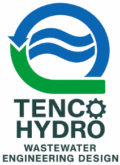When it comes to wastewater treatment, selecting the most effective separation technology is crucial. Two common methods used for removing suspended solids, oils, and other contaminants from water are Dissolved Air Flotation (DAF) and Surfactant Air Flotation (SAF). Each method has its own set of advantages and disadvantages, making them suitable for different scenarios. In this blog post, we’ll compare DAF and SAF to help you determine which technology best fits your wastewater treatment requirements.
Dissolved Air Flotation (DAF)
Advantages:
- High Efficiency: DAF is highly effective at removing fine suspended solids, oils, and greases, achieving high levels of water clarification.
- Versatility: Suitable for a wide range of wastewater types, including industrial and municipal wastewater.
- Compact Design: Typically has a smaller footprint compared to other separation methods, making it ideal for facilities with limited space.
- Operational Stability: Provides consistent performance and is relatively easy to operate once set up.
- Chemical Enhancement: Can be combined with coagulants and flocculants to enhance separation efficiency.
Disadvantages:
- Energy Intensive: Requires significant energy to generate the dissolved air, leading to higher operational costs.
- Higher Maintenance: Involves more complex equipment, such as pressure vessels and air saturation systems, which can increase maintenance requirements.
- Chemical Dependency: Often requires the addition of chemicals, which can add to the cost and require careful handling and disposal.
- Capital Costs: Higher initial investment due to the complexity of the equipment involved.
Surfactant Air Flotation (SAF)
Advantages:
- Enhanced Removal Efficiency: Surfactants can improve the separation efficiency for specific contaminants, such as oils and greases, making SAF particularly effective for oily wastewater.
- Lower Energy Requirements: Generally requires less energy compared to DAF, as it relies on surfactants to aid flotation rather than pressurized air.
- Chemical Specificity: Can be tailored by selecting appropriate surfactants to target specific contaminants, offering flexibility in treatment.
- Reduced Complexity: Simpler system with fewer components, potentially leading to lower capital and maintenance costs.
Disadvantages:
- Surfactant Management: The need for surfactants introduces additional chemical management issues, including procurement, handling, and potential environmental impacts of surfactant residues.
- Cost of Surfactants: The ongoing cost of surfactants can be significant, especially if large quantities are required.
- Potential for Secondary Pollution: Improper use or disposal of surfactants can lead to secondary pollution, complicating environmental management.
- Specialized Knowledge: Requires a good understanding of surfactant chemistry and its interactions with specific wastewater constituents, which can add to operational complexity.
Choosing the Right Technology
When deciding between DAF and SAF, it’s important to consider the specific requirements of your wastewater treatment process. Here are some key factors to keep in mind:
- Nature of Contaminants: If your wastewater contains a high concentration of oils and greases, SAF might be more effective due to its enhanced removal efficiency with surfactants.
- Energy Consumption: For lower energy consumption, SAF is generally more advantageous, as it doesn’t require the same level of pressurized air as DAF.
- Operational Costs: Consider both the initial investment and ongoing costs, including energy, maintenance, and chemical use.
- Space Constraints: If space is limited, the compact design of DAF systems can be a significant advantage.
- Complexity and Maintenance: Evaluate the complexity of each system and your facility’s ability to manage maintenance and operational tasks.
Conclusion
Both Dissolved Air Flotation (DAF) and Surfactant Air Flotation (SAF) offer unique advantages for wastewater treatment. DAF is known for its high efficiency and versatility, making it suitable for a wide range of applications, albeit with higher energy and operational costs. SAF, on the other hand, provides enhanced removal efficiency for oily wastewater and lower energy requirements but comes with the added complexity of surfactant management.
By carefully considering the specific needs of your wastewater treatment process, including the nature of contaminants, energy consumption, operational costs, space constraints, and system complexity, you can choose the technology that best fits your requirements. Making an informed decision will ensure your wastewater treatment system operates efficiently, effectively, and sustainably, meeting both your needs and regulatory standards.
